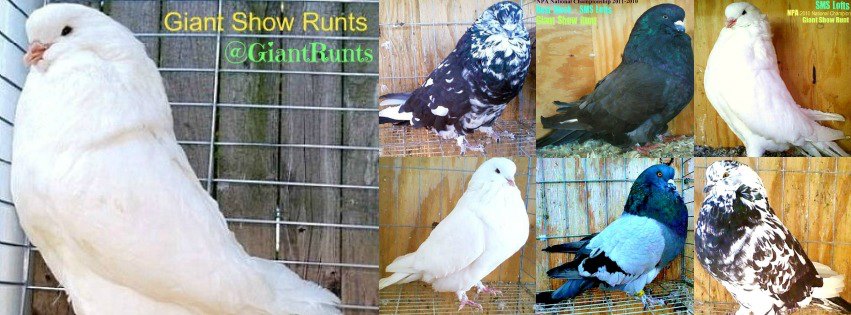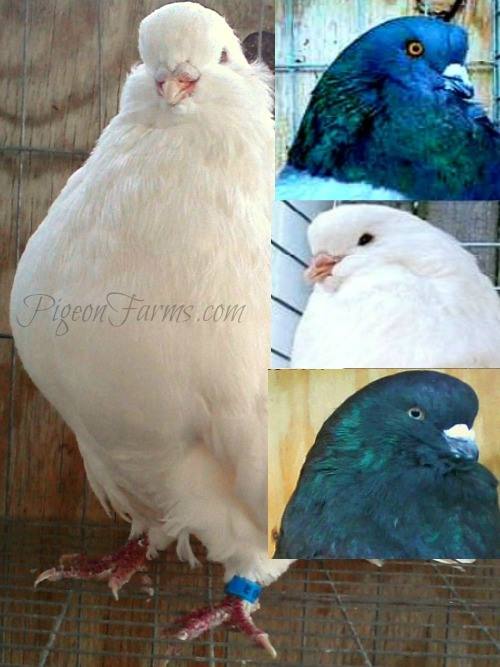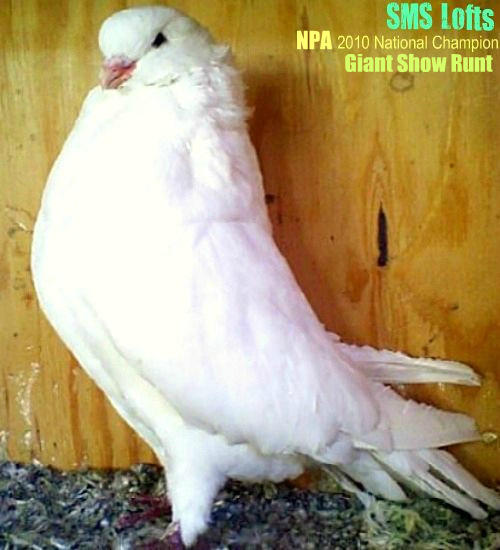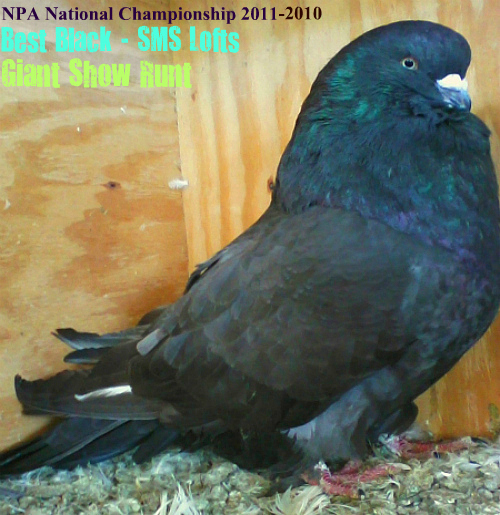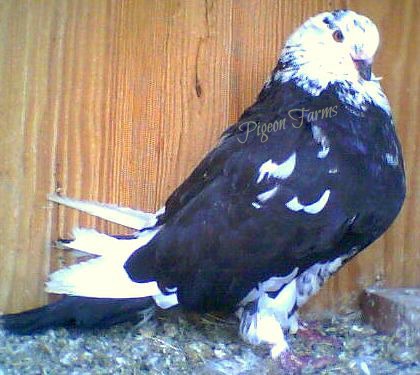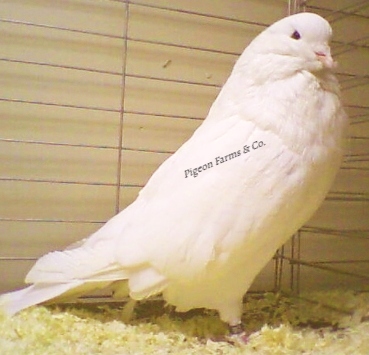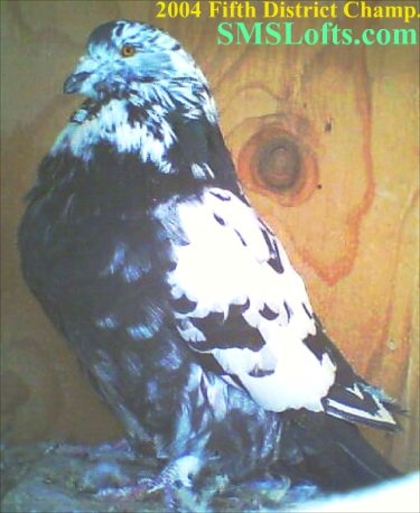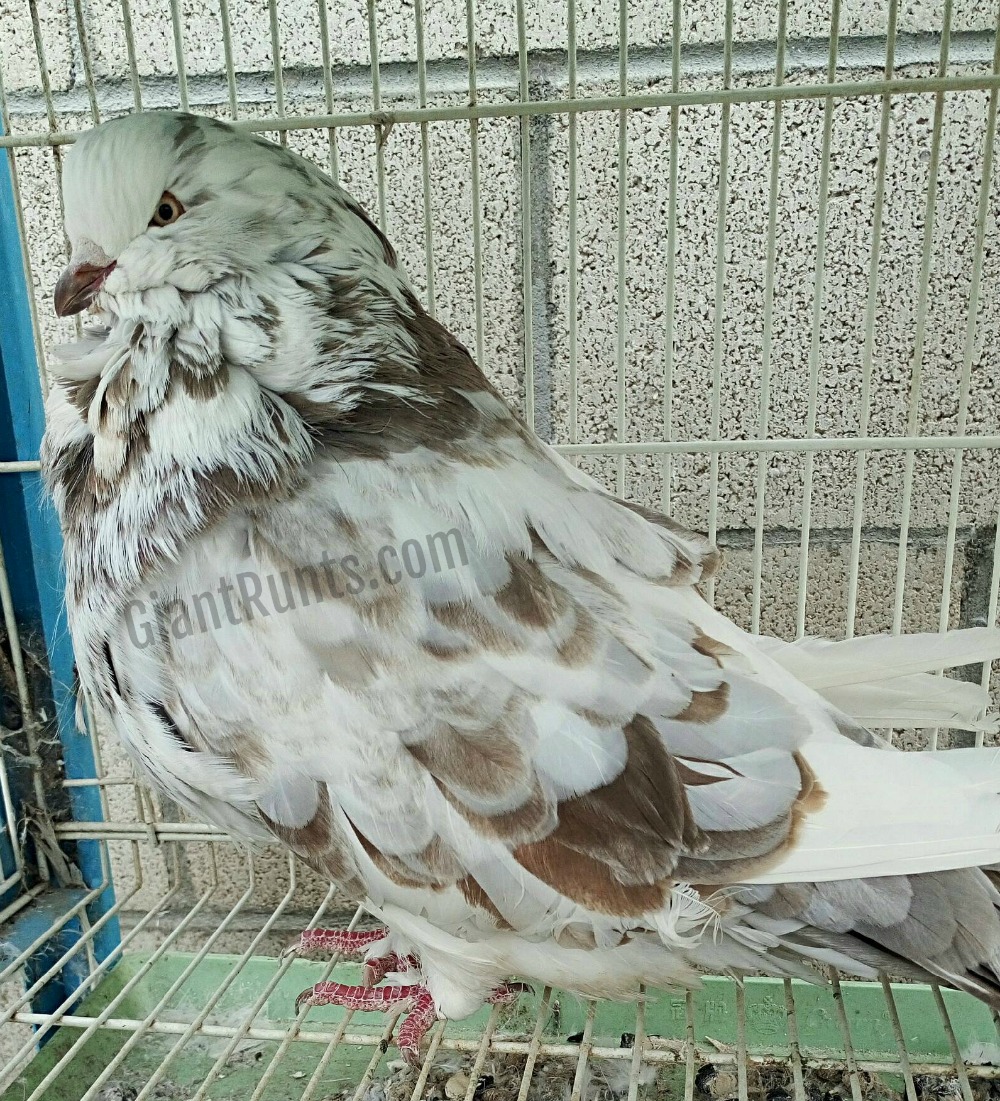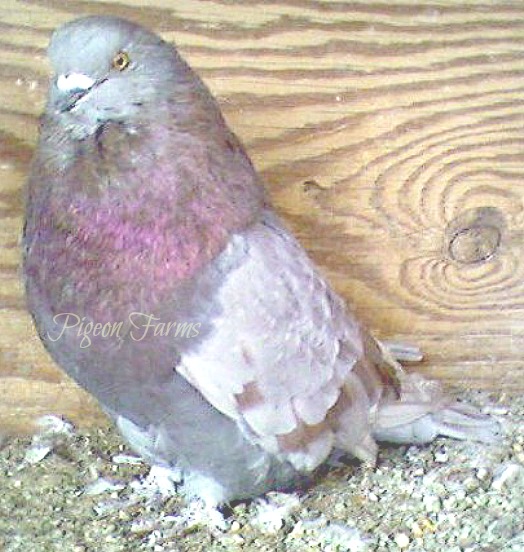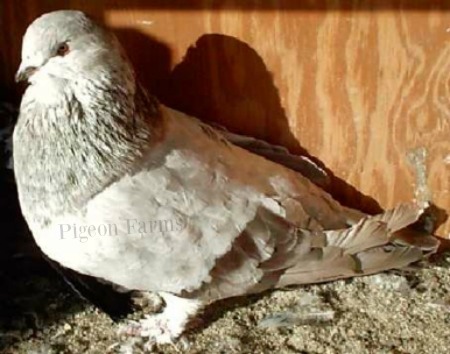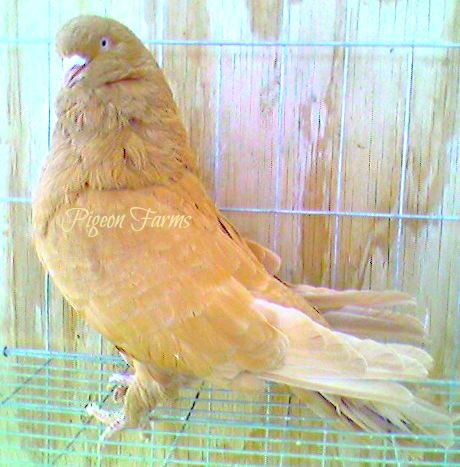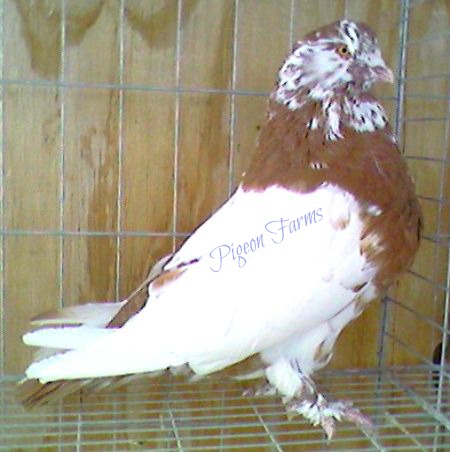The Beak:
Should be broad, showing strength, of medium length. Fairly thick, neither down faced or too straight, but as illustrated. Black coloration in Blue and Black, flesh coloration in all others. (An AOC can have either)
The Wattle:
Small, oval, equal in size and fine in texture.
The Eyes:
Bright, clear showing health and vigor. (Bull in Whites, Pearl in all other colors) (No more than three points cut for off colored eyes.)
The Eye Care:
Neat, not too coarse, as illustrated. (Note= Damson or Plum color in Blues, Red in all others)
The Neck:
Medium in length, free from gullet and appearing broad and full towards the breast. Neck feathers to be full enough to give us the neck illustrated. It should flow towards the back. THE WING: Of moderate length and width in proportion to the size of the bird. Folded close to the body and wrapping up over the rump as in a flying pigeon. Wing butts should be held in such a way to give a look of added strength. Should be thick and strong. Any sign of sails or open back should be cut in points. Low wings are a fault and dragging wings should be cut in points or disqualified.
The Back:
Long, very broad at shoulder, straight when viewed from the side, wedge shaped from top view. Rump full enough to carry out this wedge shape. (Rump a very pale color almost white in both Blue and Silver). THE TAIL: Medium length with width governed by the wedge shape of the bird. Lines to follow the sweep of the back and tip to be carried above the floor while walking or standing in natural position.
The Breast:
Very full and as much breadth as is needed to give the Runt a chesty look. Deep enough to match the keel depth.
THE KEEL:
Very deep, long and straight. Cut in up to 3 points if badly deformed, disqualified THE BODY: Long, deep and extra full. Very broad at the shoulders, fairly wide through, but must show a taper. Belly section should be held tight so that no looseness shows in the side views. Most of the weight must come from the body and breast flesh and not from fat THE SHANK and TOES: Medium in length, thick in bone. Feathers coming apart way down the leg to give the added look of strength. Or as illustrated. Legs set well apart, but no signs of “bowlegs” or point “knock-knees” wanted. Feet and toes free from feathers, but with a slight point cut if slightly feathered. Toenails to be colored the same as the beak. SIZE and FEATHERING: Runts should be as large and heavy as possible and close feathered enough to give the bird a trim look. Actual body structure must determine size and not mere appearance or feather length. A compact, nicely feathered, heavy boned, full bodied bird should win over a raw boned, larger boned bird of less flesh. If a well put together bird is light in weight, a judge may ask if the bird has been shipped a distance, and allow for the trip.
GENERAL TYPE MUST FOLLOW THE IDEAL FORM:
When reading the standard the illustration must be before the fancier. TYPE makes this breed and must come first, even before giant size. But if a perfect typed bird is found to be too small for a Giant Runt, it may be cut in points or even disqualified by the judge. Such a bird should be used for breeding stock just as an extra-large, very poor type or sloppy birds can be cut in points or disqualified, no matter how large or small they are. SEX and AGE: As this standard is written to cover the adult male at maturity, you will use your own judgement when placing a hen or the younger sexes. The adult female should show less power and more curves than the male. Babies or young females should have less look of strength and more beautiful curves.
The MODEL ILLUSTRATION:
It is of a mature male, and adjustments should be made by the judge when viewing it.
DISQUALIFICATIONS:
Any bird seriously impaired by, or diseased. Badly crippled, too small, any bird not showing true Runt type; badly deformed or far out of condition. Color – Disqualified if white flights in colored birds, or reclassified in the mis-marked class. Cuts will be made for slight color imperfections and such a bird must be entered in its proper class. POINTS – DEDUCTION SYSTEM: Head = 15 points; Neck = 10 points; Back, Shoulders, Rump & Tail = 10 points; Wings = 15 points; Type = 20 points; Body, Breast & Size = 20 points; Legs, Feet & Setting = 10 points; Color = 10 points. NOTE: Any cut above these points disqualifies.
